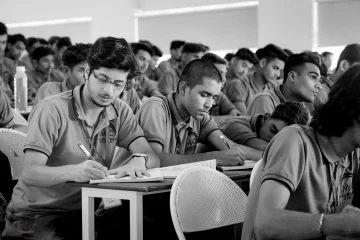What Are the Best Learning Types Used in Education Commonly?

Variation in the learning methods has been constant over time. Understanding the changes in the learning types and styles can enhance the productivity of students and teachers. Every student learns things in different ways. They use different methods to memorise their class discussions and other stuff. Is there any best learning method that every student fall under? The answer to this question is yes. The VARK model provides the best learning types that every student can use and learn effectively.
VARK is an acronym for different learning methods. Explaining the meaning and an in-depth discussion of the model is the focus of today’s discussion. Thus, before wasting any time further, let’s go to the main topic.
VARK Model of Learning
We have discussed this with some coursework assistance providers in the UK. They told that the VARK model comprises four different learning types. A brief description of the four types is as follows;
V = Visual Learning
The first type of learners in a class are visual learners. They are the individuals who grab the concept or information visually. They prefer to use images, bar charts, maps, and labelled diagrams as a source of learning. We can also say that visual learners are excellent observers. They observe things closely while looking at them with their two bare eyes.
One important to note is that they don’t usually respond much to photos and videos. Although they are types of visuals, such learners prefer shapes and patterns. They learn by visual representation of things. For instance, instead of reading the theory of an experiment, they like to learn with the help of some flow chart or diagram. Among all the learning types, visual learning is the most popular.
A = Auditory Learners
As the name suggests, such learners prefer learning over some kind of audio. They better grab the concept when it is heard or spoken. They take part in the lectures and listen to them carefully. Whenever there is a need, such learners also ask questions. Thus, this combination of speaking and listening makes learning easy for them.
These students prefer to listen to lectures rather than read class notes. Auditory learners use their own voices to learn new concepts and ideas. These individuals prefer to read aloud to themselves. They aren’t scared to speak up in class and are excellent at explaining things in a verbal manner. Additionally, they may read more slowly and repeat what a teacher says. However, auditory is a popular learning type that many students follow. For instance, in your early childhood, you may have learned things walking in the lounge and reading aloud. All this learning comes under the auditory type.
R = Reading/Writing Learners
According to the VARK learning types of theory, these learners come in third place. Such learners prefer to learn things or concepts by writing them. Also, according to education experts, learning while writing is the best strategy. This type is often misunderstood as visual learning. In reality, there is a lot more difference between both of them.
According to these learners, a written text is more powerful than any visuals and audio script. They are also excellent writers and can format their assignments. For instance, instead of taking information from bar charts and diagrams, they write the information present in them. This writing helps them learn and memorise things effectively. You can also call these learners note-taker, as they love to take notes and read them afterwards.
K = Kinesthetic Learners
It is the most practical method of learning among all other learning types. Kinesthetic learners learn things by doing things practically. In fact, they are not the theory people who can learn by studying all the heavy books and sources. They take the most practical approach and love applying the book knowledge and learning from it. These learners may find it challenging to sit quietly and do nothing. When studying, they may need to take more frequent breaks. For instance, the teacher explains a scientific experiment in the class. There are high chances that these learners will go to the laboratory and perform that experiment. Thus, they prefer to learn by doing things, not by visualising, listening, and writing.
Advantages and Disadvantages of VARK Model
Like everything, learning types also have advantages and disadvantages. Though the advantages are more in number, still there are some weaknesses in this model. A brief description is as follows.
Advantages
Identify Preferences: The learning types mentioned above enable students to analyse their abilities effectively. After knowing about these types, students better identify themselves and which category they fall into. As a result, it increases their learning power and productivity.
Independence: Once students find their learning potential, they become independent. For example, a particular student finds out that he can learn more by listening and speaking. This finding allows him to get independence from educators. He no longer needs assistance in learning different things.
Flexibility: Flexibility is the prime advantage of the learning types. Students can choose any method depending on their interests and potential. Any student switch from one type to another.
Disadvantages
Simplicity & Categorising: The over simplicity and categorisation of all the students into four types is considered a disadvantage of the VARK model. Many individuals can be unique who does not come under these learning types.
Restrictive: The VARK model has been criticised for being too restrictive for a long time. According to a study, only about 39% of students fit into this model. It is a significant flaw of the VARK model.
Implementation: Implementation of this model has been a problem for many students and educators. It only explains the four learning types but does not give any information about how to implement them.
Conclusion
Every student has a learning strategy that he can use to learn things in an effective manner. The VARK model of four learning types also provides a good description of students’ learning. Any student can find his true potential by evaluating himself based on the above types.















